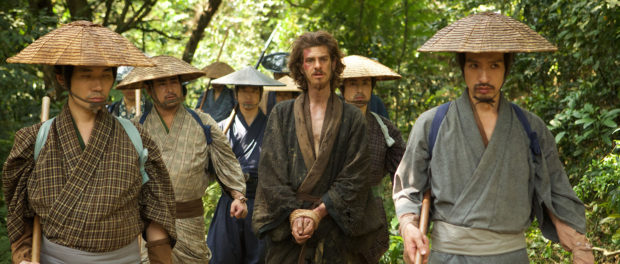Scorsese’s Silence: Faith, History, or Cultural Battles?
Silence is indeed a work of art. The camera that pursues the Japanese countryside is like someone chasing a lost lover: it pierces the heart. You see that the film, every frame of it, is a labour of love. Scorsese is at his best with the cinematography, the contours of his characters, the art design, the painstaking detail of each shot. His forty-year relationship with his editor, Thelma Schoonmaker, shows. I could tell that he sat with his filmmaking team to craft each and every aspect of the film. But he must also have sat down to write the screenplay (which he co-wrote with Jay Cocks) and I don’t know if he saw what I saw.
Before I delve into the problems of the film, I have to give full credit to someone of the stature of Scorsese, who decided to make a religious (semi)critical film. He has done so in the past and having taken it on this time again, is really creditable. Outside of Mel Gibson, I haven’t seen any mainstream films about Christianity, let alone a questioning or critique of this nature.
The film takes us to the 1600s, where the two Jesuit Padres Rodrigues and Garrpe, (played by Andrew Garfield and Adam Driver), learn about the abdication of the faith by their mentor Padre Ferreira (Liam Neeson). This prompts them to turn their eyes to Japan, to go in search of their mentor. The need to find Ferreira isn’t just driven by the desire to uncover what happened to him, but also to bring him back to the faith and re-assert the supremacy of the church, its principles, its teachings and the love of God.
They set out on a journey that will take them to the land of the Sun, where hundreds of faithful are hiding under the shadow of persecution. This persecution means that armies of inquisitors are looking for them, to either have them apostatize the Christian faith or else face death. Hordes of villagers are dumped in the ocean or rolled up in stacks of stilts and burnt alive. There are multiple instances when we see this happen; each of them gruesome and mind-numbing.

Silence.
With the looming threat over many villages and peoples who wish to follow the faith, Rodrigues and Garrpe must part ways in their search for Ferreira. They head out to different areas of the country, still driven by the desire to continue to bring the word of God to the masses.
While the film attempts to pace well, the narrative stagnates at this perpetual place of the faithful, led by Rodrigues (Garrpe becomes absent somewhere in the middle of the film) and their battle with the inquisitors. The narrative doesn’t evolve; it doesn’t question anything new and even the characters begin to stagnate.
The search for Ferreira leads Rodrigues to the mountainous temples of Japan and Scorsese dabbles between different ideas in pursuit of the real theme of the film, or really his confusion about it. There is the battle that’s brewing inside Rodrigues; as he sees people suffering and his God remains silent. He sees his faith trembling as Ferreira appears before him calm, peaceful in his newly acquired belief, with a family and continued learning of Eastern ways.

Silence.
Right there a discussion transpires between Ferreira and Rodrigues, as they debate the incompatibility of the Christian faith with the Eastern school of thought. That bit was my favourite part of this 160-minute saga. And if that wasn’t enough, there is this whole historical burden that the narrative continues to carry. Well into the third act, we return to images of other European travelers arriving at Japanese shores, hiding symbols and tokens, that are intended to continue to penetrate the kingdom and inspire people to follow the Christian path.
The only constant in the film was that it spoke about the fragilities of human nature. It wasn’t overt, nor was it intentional at times, but was the true essence of the film. Silence is the silence of human tragedy, the silent voyage of human faith and the silent realization that faith and peoples have different faces. I wish it spoke to all of this more coherently and the poetry wasn’t limited to the camera and all that stood before it.
PS: The back and forth between Japanese and English dialogue spoke of clumsiness.
Silence is now playing in theatres.






